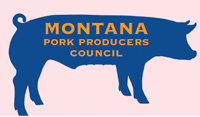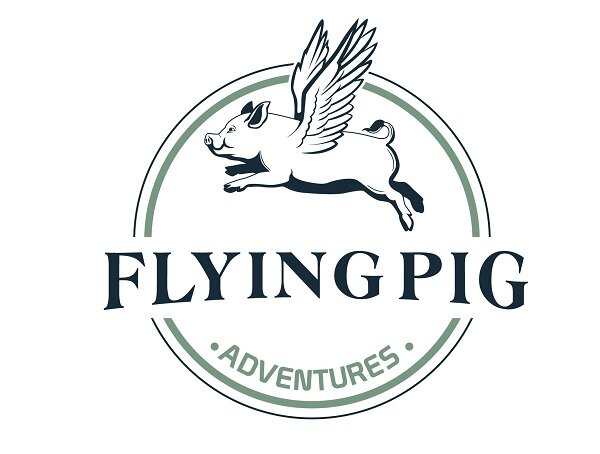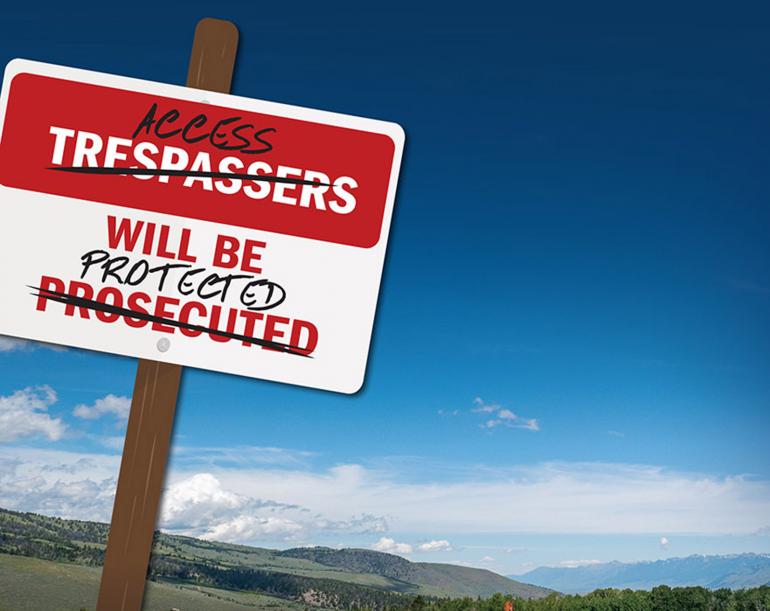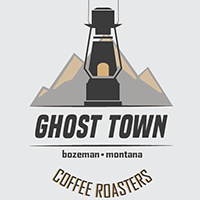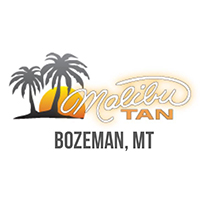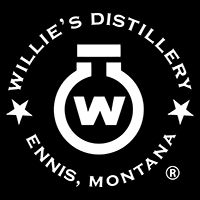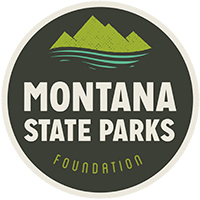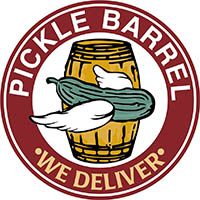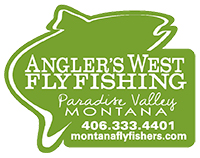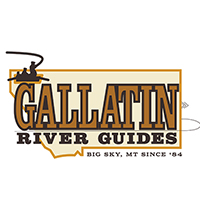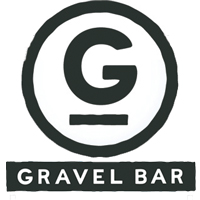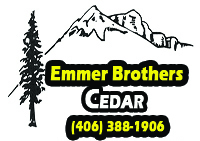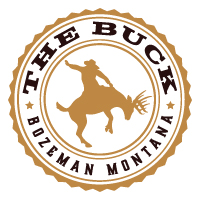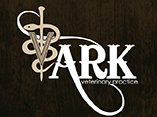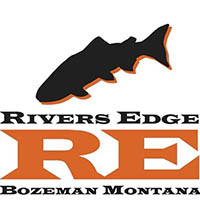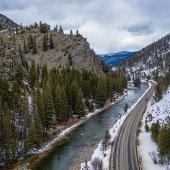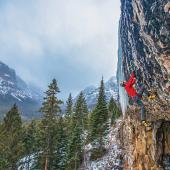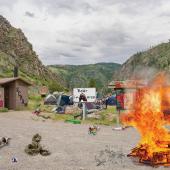Paying for the Right to Roam
Improving public access with a billionaire surcharge.
Montana’s wildlife is for sale. Although it’s technically illegal to privatize wildlife in Montana, rich out-of-staters are circumventing the law by purchasing immense tracts of land and locking Montanans out.
Traditionally, Montana landowners have allowed public hiking, fishing, and hunting on their private lands. But recently, multimillionaires and billionaires have changed the culture of Montana by buying up big ranches and posting No Trespassing signs to keep Montanans out. They continue consolidating family farms into ever-bigger mega-ranches, which they enjoy as private wildlife reserves for their own hunting safaris. This trend has effectively shut off much of Montana to all forms of outdoor recreation, from foraging for mushrooms and birdwatching, to hunting and fishing.
Any Montanan who loves the outdoors has felt the negative impacts of these mega-rich newcomers, who contribute shockingly little tax revenue to compensate for their oversized impacts. To address core issues and rebalance public access, I propose a modest “Billionaire Surcharge Tax” for property owners with over 20,000 acres of land in Montana. Proceeds from the tax will go toward public-access programs, such as Block Management, which rewards landowners who continue to allow public access.
The Problem
Texas billionaire-brothers Dan and Farris Wilks made their fortune in the fracking business, then cashed out and brought their money to Montana. They bought the 62,000-acre N-Bar Ranch southeast of Lewistown in 2011, and then started gobbling up neighboring ranches to expand their estate to 358,837 acres (560 square miles) by 2015.
Like other billionaires and multimillionaires who come to Montana, the Wilks brothers posted No Trespassing signs and closed their ranches to traditional public access. And to boot, they blocked off access to public parcels nestled within their mega-estate, namely the elk-rich Durfee Hills—public land administered by the Bureau of Land Management (BLM). Previous owners had allowed the public to cross their private land in order to reach the public Durfee Hills, but the Wilks brothers ended this practice.
Then, the Wilks brothers tried to push a land swap, giving the BLM more accessible land elsewhere in exchange for the Durfee Hills. Local hunters successfully shot down the proposal, because the land being offered wasn’t prime wildlife habitat like the Durfee Hills. When the deal failed, the Wilks brothers cut a swath around the Hills and erected a fence posted with No Trespassing signs. They also closed off public access to an unrelated parcel on Bullwhacker Road near Winifred, which offered historic public access to the Upper Missouri River Breaks National Monument, using it as a bargaining chip in their ongoing land-swap proposal.
Dan and Farris Wilks are more visible than other billionaires in the state, because of the size and speed of their acquisitions and their aggressive approach toward the public. In less than five years, they bought enough ranches to become the second-biggest private landowners in the state. Recent controversies have landed them in the newspapers many times over, yet the core issues began years earlier.
Montana needs proactive policies to ensure the mega-rich contribute something to offset their impacts to the state. The legislature could take the lead on introducing a billionaire surcharge tax, or the people of Montana could take the reins to introduce a ballot initiative.
Historically, Montanans have enjoyed a longstanding right to roam the open countryside across public and private lands. Known in Sweden as allemansrätten, “the everyman’s right,” the right to roam has been legally recognized and expanded across many European countries, as detailed in my article Posted: Please Trespass. Anyone in Montana culturally had a similar right to roam until the 1980s, when a different type of people began buying large tracts of land and locking the public out.
Freedom to roam was widely recognized as a common right in early American history. Private-property legislation and the culture of No Trespassing signs arose with Jim Crow laws in the wake of the Civil War and the end of slavery. Southern states enacted private-property laws for the purpose of preventing emancipated slaves from walking, foraging, fishing, or hunting on private lands, effectively confining black people to public roads. Once established, private-property culture expanded to affect people of all races and gradually spread nationwide, ultimately transforming Montana. People who once freely hopped fences to hike across private rangelands are now confined to roadways and congested trails on public lands.
Conglomerate ranches like those of the Wilks brothers’ are such immense tracts of land that game animals seldom stray beyond their boundaries. This makes them de facto private game preserves, where landowners enjoy private hunts or sell hunting rights to other wealthy individuals. Guided elk hunts on these mega-ranches sell for up to $15,000. The rich own the land, and act like they own the wildlife, banning common folk from hunting or even walking there—despite the Montana constitution clearly stating that wildlife belongs to everyone. Feudalism was long ago rejected as reprehensible in Europe, yet we have allowed feudalism, or rather neofeudalism, to take our land and erode our rights here in modern-day Montana (see my article Neofeudal Montana).
Collectively, wealthy interlopers are buying up more and more of Montana, eroding our rights yet contributing shockingly little in taxes. The average property tax on rural, agricultural land in Montana is about 65 cents per acre (as of 2017). And the uber-rich often claim residency out of state in order to avoid paying Montana income taxes. They have an oversized impact on the Montana way of life, yet contribute very few tax-dollars to offset those impacts.
A Solution
One way to restore balance in Montana is to apply a surcharge property tax on mega-ranches, directing proceeds toward public-access-enhancement programs. My proposal, a surcharge tax on parcels greater than 20,000 acres, would apply to only 128 landowners in Montana. Tax proceeds would be directed toward programs such as Block Management, a cooperative private-public partnership between landowners and Montana Fish, Wildlife & Parks that pays landowners to provide free hunting access to private land, and often to adjacent, otherwise-inaccessible public lands. Tax funds could also be used to purchase access routes to public parcels that are currently locked up within private lands. A modest $1-per-acre surcharge tax on parcels of 20,000 acres or more could raise several million dollars per year to help fund public access.
To avoid double taxation, landowners who claim residency in Montana and pay income tax in Montana would be exempt from the surcharge. In addition, any out-of-state landowner not wishing to pay the tax could choose an exemption by allowing continued traditional public access to their lands. Those who wish to block public access could do so and pay the surcharge. Either way, the surcharge would help restore balance in Montana, even if all mega-ranches chose the exemption and paid no taxes.
Dan and Farris Wilks would be among those most affected by the tax, contributing $358,837 per year toward public-access programs in the state if they didn’t choose the exemption. Numbers on that scale sound unfathomably large to most of us, but not necessarily to the mega-rich. With a combined net worth of $2.6 billion, the Wilks’ annual surcharge amounts to around one one-ten-thousandth of their fortune—the equivalent of about $8 for the average Montanan.
Similarly, consider Stan Kroenke, owner of several sports teams, including the Los Angeles Rams and Denver Nuggets. Kroenke is the fifth-largest landowner in the U.S., with 1.38 million acres nationwide. Kroenke owns 225,162 acres in Montana, including the Cedar Creek Ranch near Ennis, the Broken O Ranch near Augusta, and the PV Ranch near Hysham. Kroenke made his fortune in real-estate development. He and wife, Walmart heiress Ann Walton, have a combined net worth of approximately $12 billion. A 5% return on that fortune would yield a low-end estimate of $600 million in annual income. A $1-per-acre surcharge on his Montana ranches would raise $225,162 per year for public access in Montana, at a cost to Kroenke of .00375% of his annual income.
At the very least, the surcharge property tax outlined here is a solid proposal to begin a statewide discussion on the issue and how to balance public-access needs in Montana.
Exemptions
Any landowner who honors the Montana tradition of open access should naturally be exempt from the surcharge tax. For example, the Gordon Cattle Company, a 38,500-acre ranch in north-central Montana, is protected by a conservation easement, including hunting rights, and guaranteeing access for future generations. The Gordon Cattle Company would be exempt from the surcharge tax, as would any other major landowner who allowed public access.
Exemptions would also apply to American Prairie, which has raised funds and purchased 121,000 acres of grazing leases across 335,000 acres of public land for a wildlife preserve in central Montana. American Prairie has opened private lands to hiking, camping, and hunting, as well as allowing access to otherwise landlocked public parcels.
The Nature Conservancy and Trust for Public Lands would also be exempt, as they purchase endangered properties and often flip them to conservation buyers, such as the BLM or Forest Service, who reimburse the nonprofits with funds from the Land and Water Conservation Fund (LWCF). These purchases are targeted toward improving habitat connectivity and access to public lands, such as private inholdings partly or wholly surrounded by public lands. Most TNC and TPL lands are open to public access while awaiting LWCF funding to hand the parcels off to public-lands agencies.
In 2015, for example, the Nature Conservancy purchased 117,000 acres of forest land from Plum Creek Timber that were intermingled with public lands within the Blackfoot River watershed. TNC has since been incrementally transferring the tracts to the BLM and Forest Service as LWCF funding becomes available. These lands remain open to hiking and hunting, so the Nature Conservancy would be exempt from the surcharge tax.
Of the 128 landowners with properties of 20,000 acres or more, many would likely choose to take the exemption and allow public access. Therefore, the surcharge tax would apply only to megarich landowners who purchase properties for private game preserves. These landowners can afford to pay the tax, and likely would choose to pay the tax rather than allowing the public to access their private reserves.
The $1-per-acre surcharge tax is also not a significant burden to landowners who choose to pay it, as delineated above. For another example, Ted Turner owns 148,870 acres spread across four different ranches in southwest Montana. An estimated 2,300 to 3,300 elk reside on Turner’s land, and wealthy hunters pay up to $15,000 for the privilege of hunting them. Therefore, ten of Turner’s elk could pay the entire annual surcharge of $148,870. These funds could significantly improve the public-access situation in Montana by rewarding landowners who participate in Block Management to keep private lands open to traditional public access.
Fine-Tuning the Details
The billionaire surcharge tax could help rebalance public-access issues in Montana, and it’s important to bring this proposal to the legislature for consideration. However, the tax proposal outlined here is not a perfect solution, and it will require fine-tuning for implementation.
One issue is that name inconsistencies can complicate identifying large property owners in the state. For example, the Montana Department of Revenue identified 128 landowners with properties larger than 20,000 acres, yet many names on the list are duplicates.
Any landowner who honors the Montana tradition of open access should naturally be exempt from the surcharge tax.
For example, Franklin Otis Booth Jr. invested $1 million with Warren Buffett in 1963, which grew in value to $2 billion by the time Booth died in 2008. The Booth family ranch encompasses approximately 125,000 acres sprawled across both sides of the Montana-Wyoming border. In Montana, the Department of Revenue lists “Booth Land and Livestock” with 29,009 acres and separately lists “Booth Land and Livestock Company” with 34,132 acres, for a total of 63,141 acres.
The problem with these near-duplicate names is that other landowners may own mega-ranches that are subject to the tax, but wouldn’t show up in the initial search due to name discrepancies. A landowner with two 19,000-acre ranches under different names would not have been identified in this basic search, and some manual sleuthing may be required.
Likewise, landowners could potentially dodge the tax by purposely registering different parcels under different names, bringing visible ownership under the 20,000-acre threshold outlined in this proposal. Professional bean counters will need to examine the variables and determine the best means to close potential loopholes. Nevertheless, the surcharge property tax outlined here is a solid proposal to begin a statewide discussion on the issue and how to balance public-access needs in our home state.
Montana needs proactive policies to ensure the mega-rich contribute something to offset their impacts to the state. The legislature could take the lead on introducing a billionaire surcharge tax, or the people of Montana could take the reins to introduce a ballot initiative. Either way, the end result would be a long-overdue restoration of our right to roam.
Thomas J. Elpel lives in Pony. He is the founder of Green University (greenuniversity.com) and the author of nine books on nature and sustainable living, including Foraging the Mountain West, Participating in Nature, and Five Months on the Missouri River, available from HOPS Press (hopspress.com).


